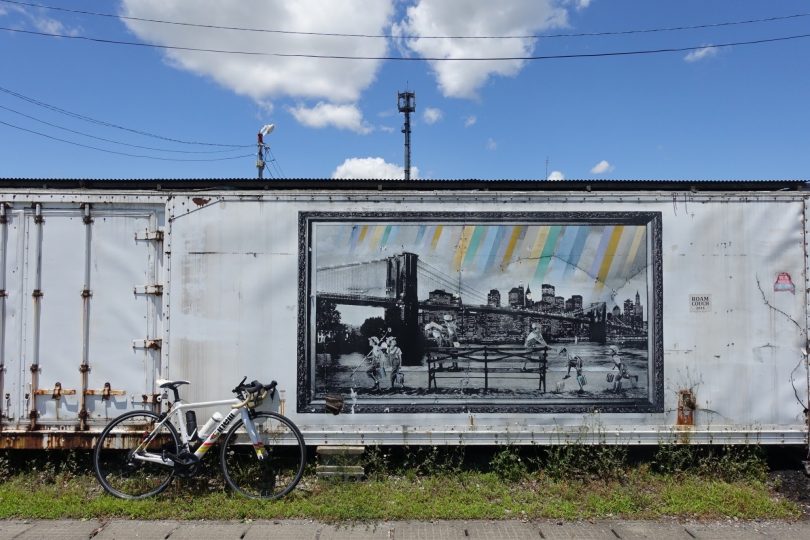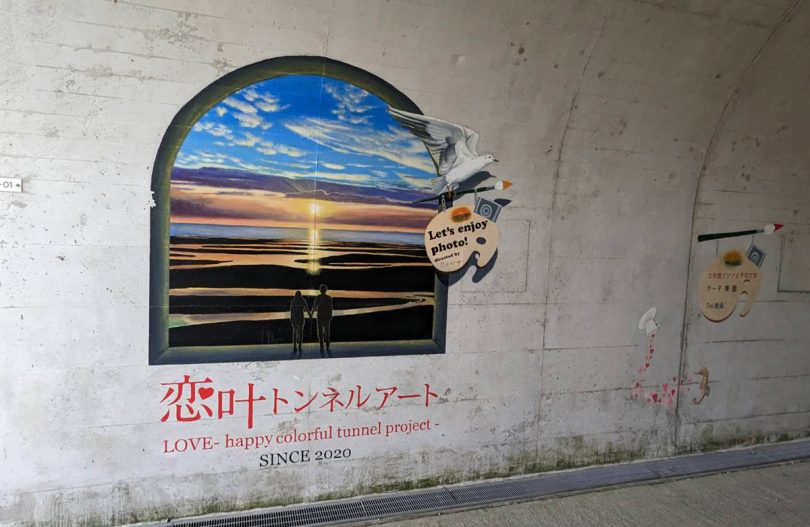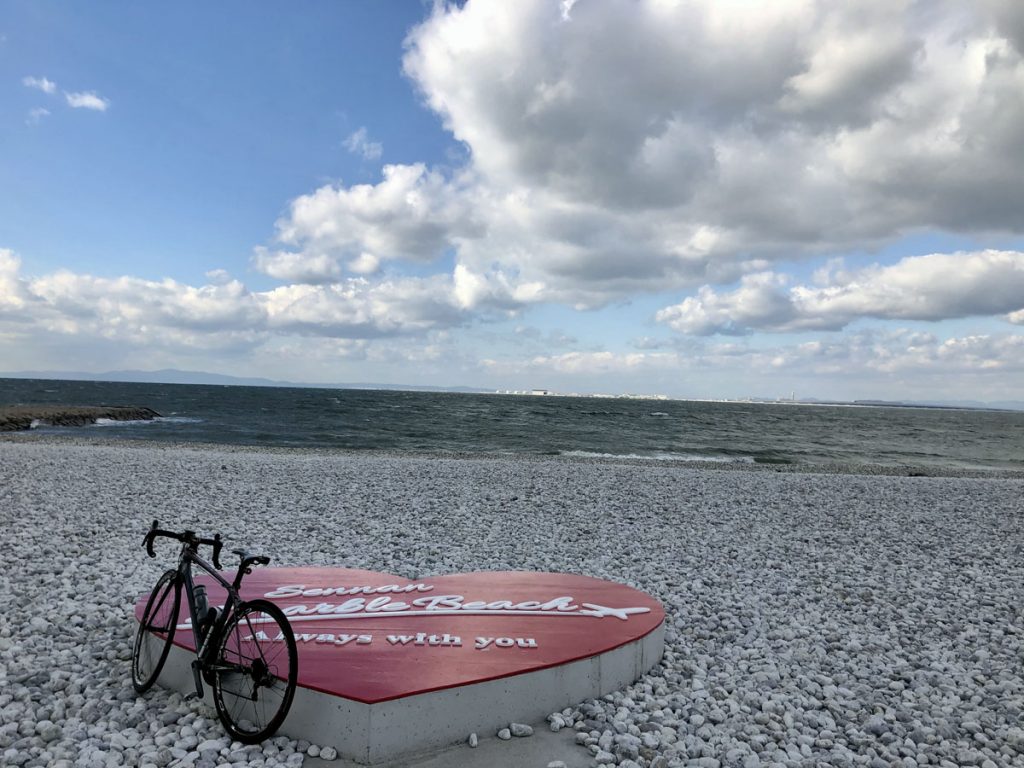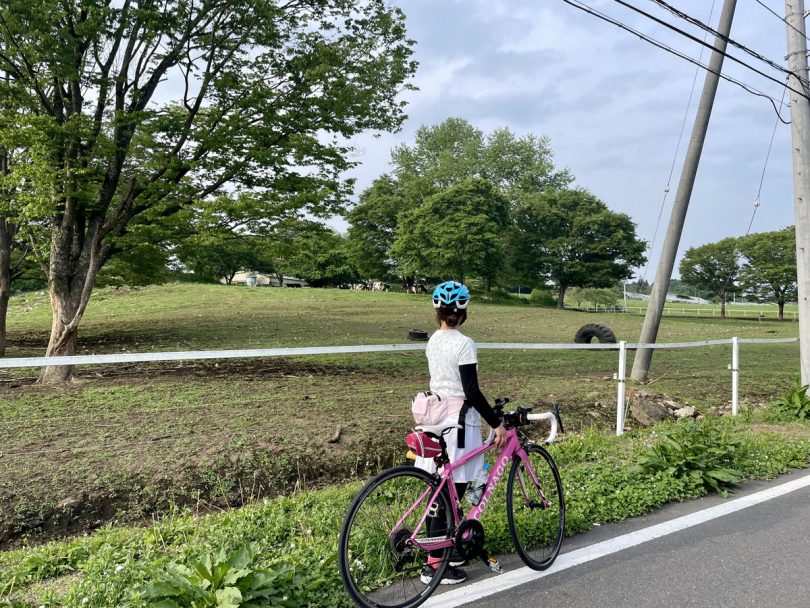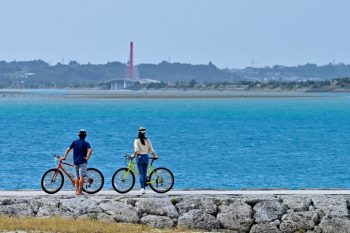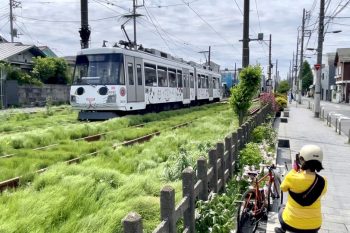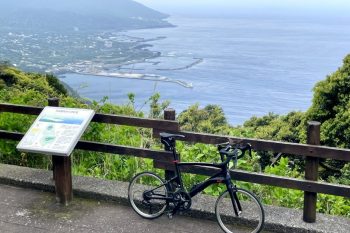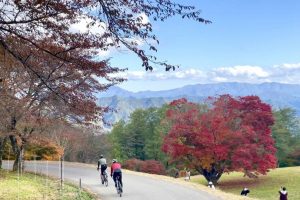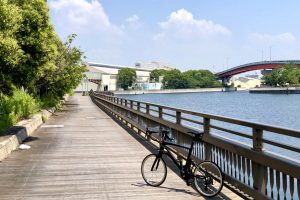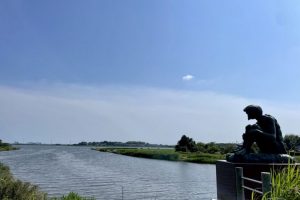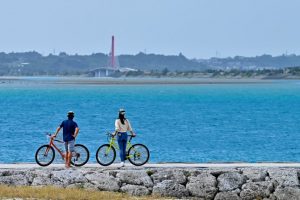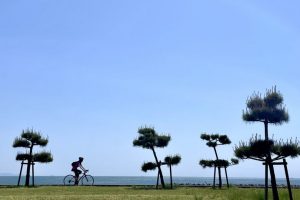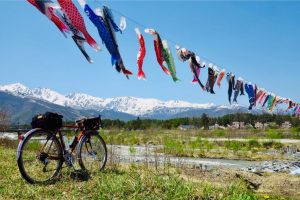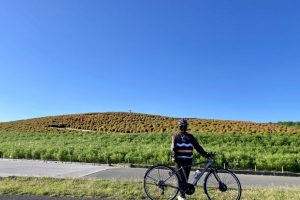Did you know that Okayama Prefecture has 8 main cycling routes and 37 sub-routes called “HARE IRO CYCLING OKAYAMA”?
I took one of the main routes, the “Kibiji Cycling Route,” and rode about 30km from JR Higashi Soja Station to JR Okayama Station.
Here is a report on my cycling trip, with its tranquil scenery of five-story pagodas, ancient tombs, and rice fields full of ears of rice.
Contents
- Start from Higashisoja Station (JR Momotaro Line)
- Meet the Red-crowned Cranes, as a Special Natural Treasure: Kibiji Tsuru no Sato Crane House
- Five-story pagoda at Bicchu Kokubunji Temple
- Kibiji Kogen Bicycle Path – Bicchu Takamatsu-joshi Park (Castle Ruins)
- Kibitsu Shrine and Kibitsuhiko Shrine – Goal at JR Okayama Station
- Summary
Start from Higashisoja Station (JR Momotaro Line)
I started from JR Higashi Soja Station. Since I was taking the Shinkansen bullet train from Osaka bringing my bike, I transferred to the JR Momotaro Line at Okayama Station and headed for Higashisoja Station.
The one-car train and unmanned station made me feel like I was traveling on a local train.
After assembling my bike at Higashisoja station, I first visited the nearby Bicchu Kokubunji Soja Shrine. This shrine is a shrine that enshrines the gods of 324 shrines in Bicchu Province as one.
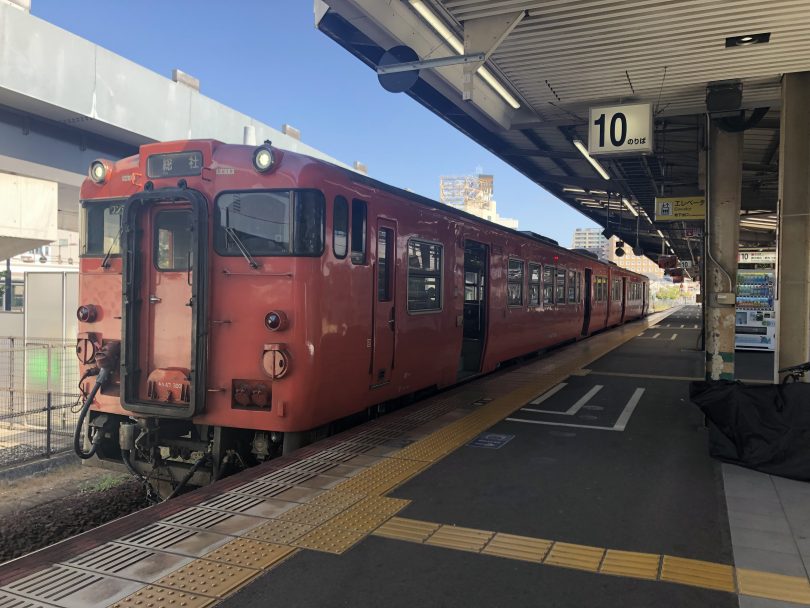

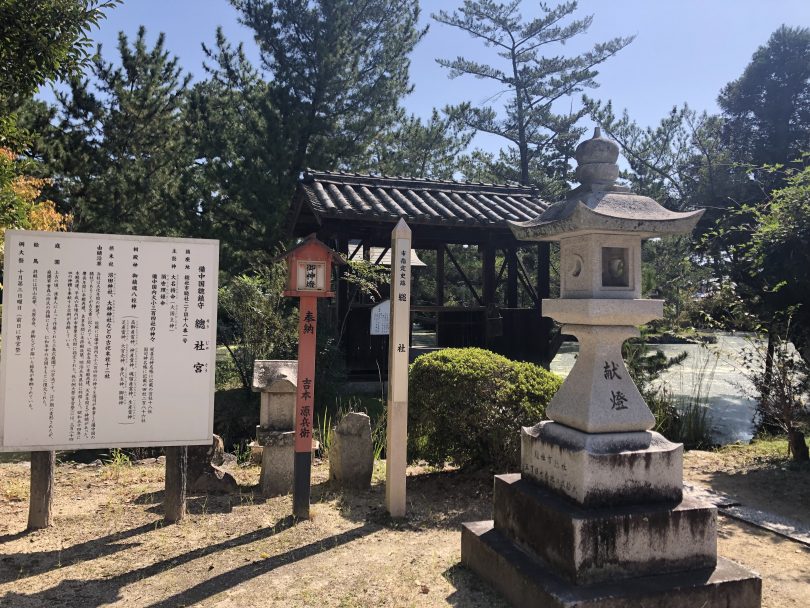
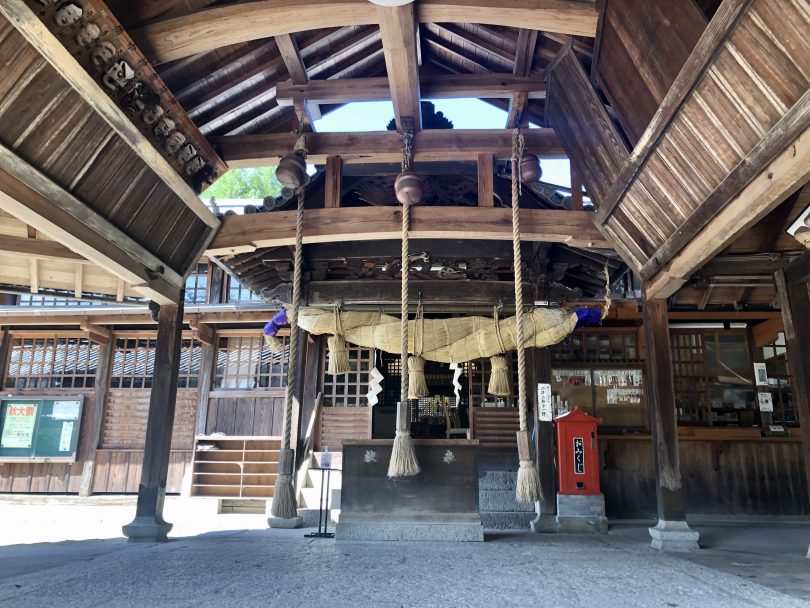

Meet the Red-crowned Cranes, as a Special Natural Treasure: Kibiji Tsuru no Sato Crane House
My next destination is the Kibiji Tsuru no Sato Crane House, located about 2.2 km south of the Bicchu Kokubunji Soja Shrine.
It is a facility for the protection and breeding of red-crowned cranes, a special natural treasure, and you can watch them relaxing on the grass by the water for free.
The National Hotel Sun Road Kibiji is also adjacent to the house, and it was crowded with families. There is an information board for cycling routes, so it is a good place to take a break and consider spots to stop by along the route.
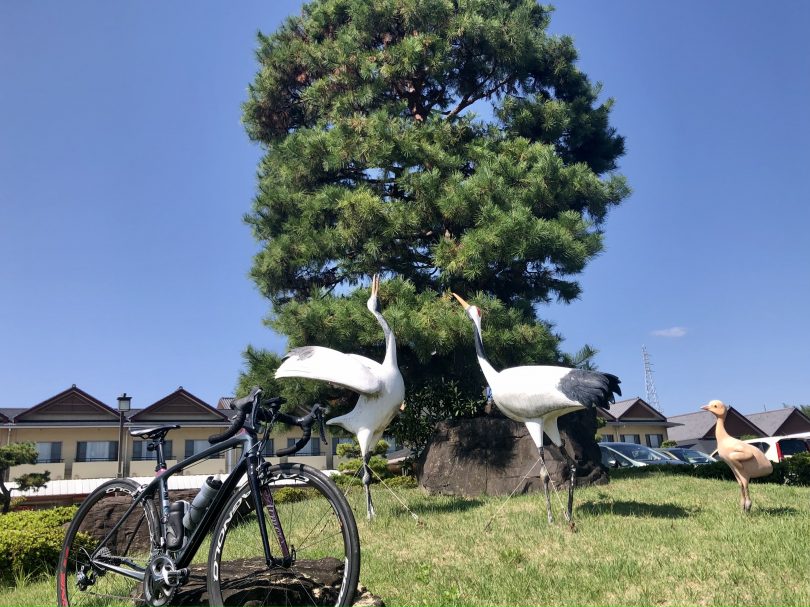

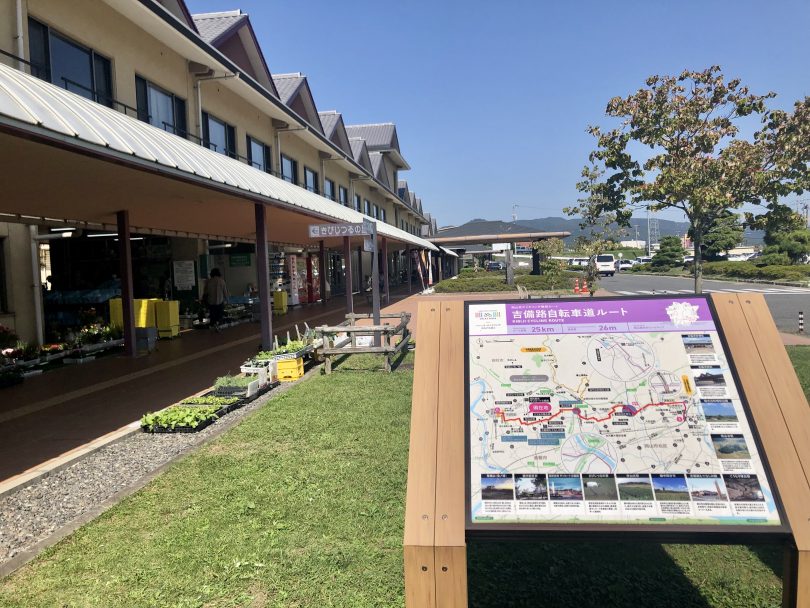
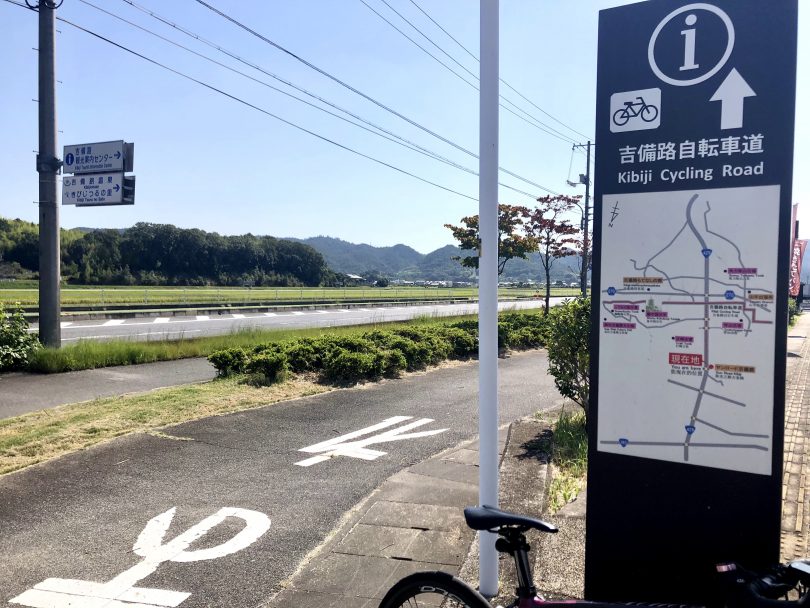
Five-story pagoda at Bicchu Kokubunji Temple
Following the cycling route, I headed for Bicchu Kokubunji Temple from Kibiji Tsuru no Sato.
On the way, you will see the Sakuyama Tomb. It is the second largest “zenpo koen fun” (an ancient burial mound that is square in the front and round in the back) in Okayama Prefecture and the tenth largest in Japan.
The overgrown mound was surrounded by rice paddies and persimmon trees, creating an autumnal scene.

The route to Bicchu Kokubunji Temple seems to be a popular cycling and running course among the locals, with families on bicycles and people going for a run.
The Bicchu Kokubunji Temple is one of the Kokubunji temples built in the Nara period (710-794) at the request of Emperor Shomu. The original building was destroyed by fire during the Northern and Southern Dynasties, and the current one was rebuilt after the mid-Edo period.
The temple is not only impressive when you see it up close, but when you see it together with the golden rice fields and cosmos, it is just like a picture postcard world. Any part of the scene is a picture. It is also attractive to enjoy the different scenery with seasonal flowers such as plum blossoms, field mustard sunflowers, and cosmos.
I took a short break at a teahouse in the precincts of the temple to have some green powdered tea and “kibimidori manju”(steamed bun).
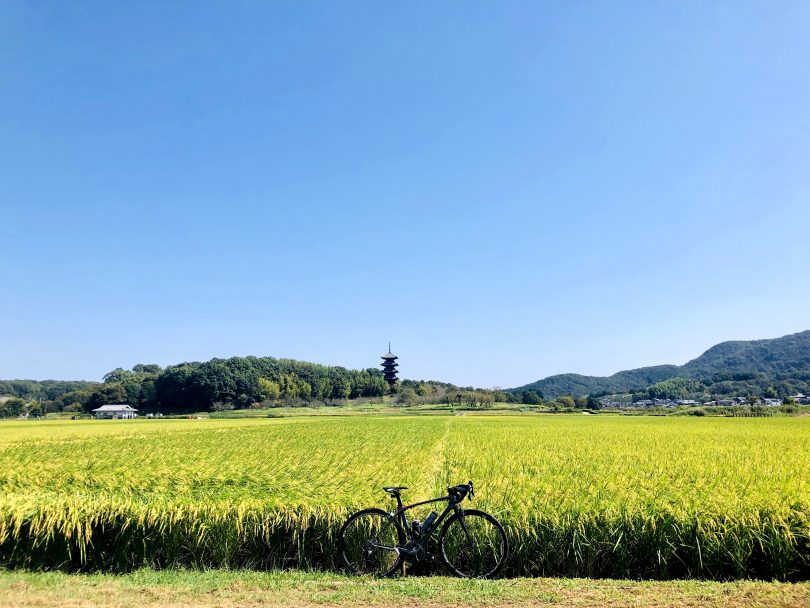
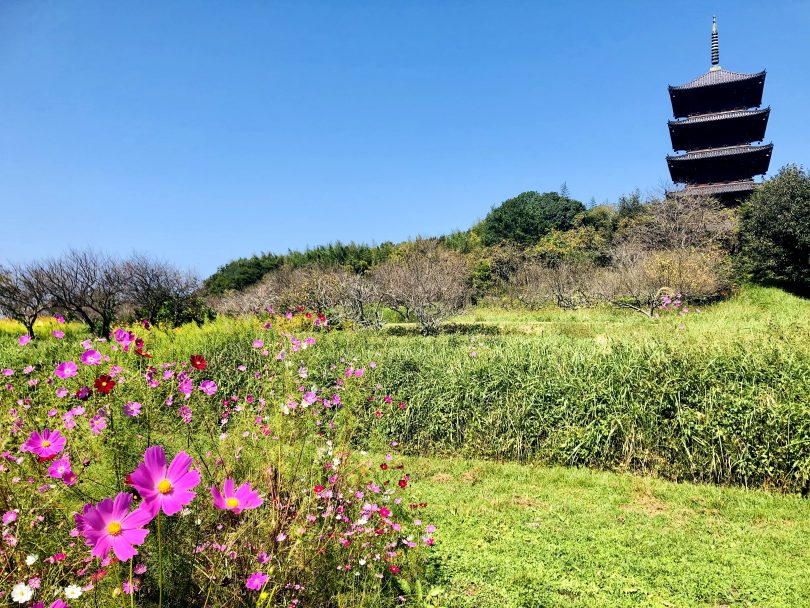
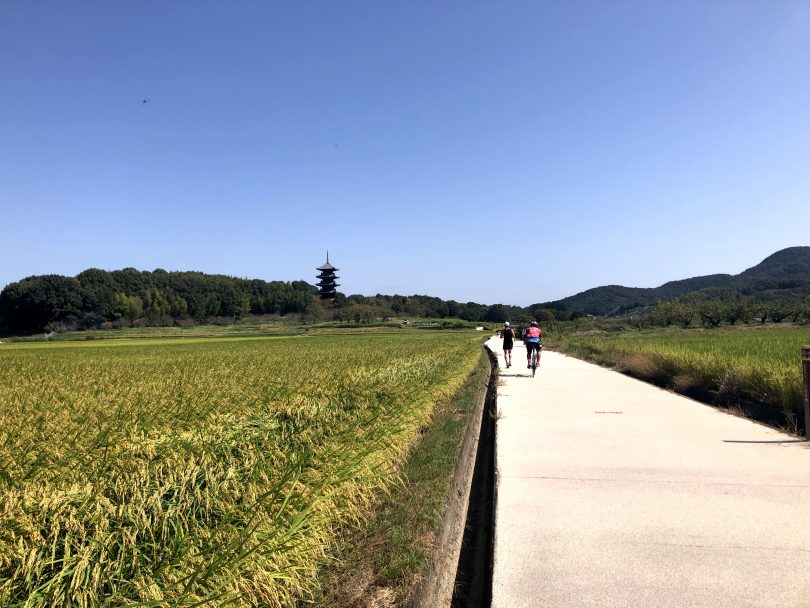
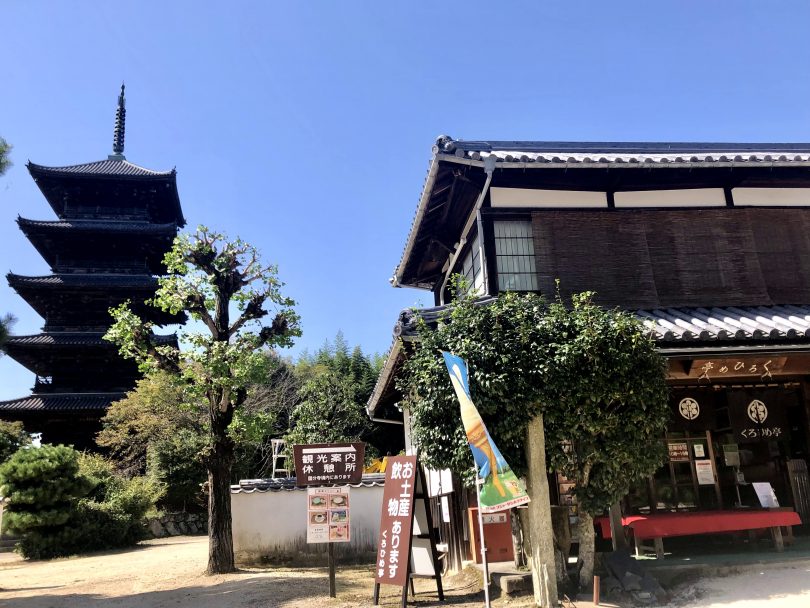

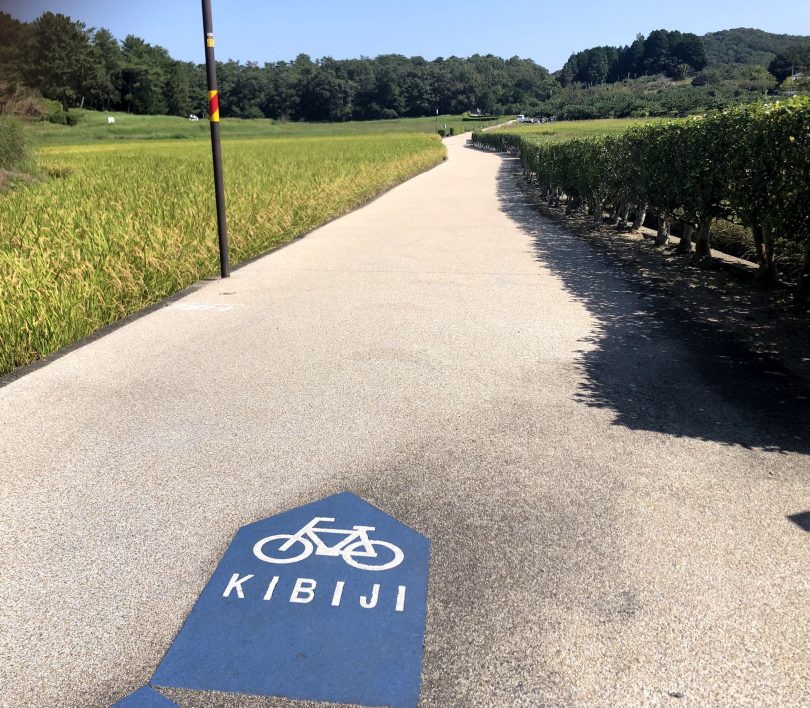
Kibiji Kogen Bicycle Path – Bicchu Takamatsu-joshi Park (Castle Ruins)
I could have gone straight east from Bicchu Kokubunji Temple to Okayama City, but I decided to go a little further north to Bicchu Takamats-joshi Park.
Even though we were going north, the way to the park was almost flat, so it was hardly strenuous.
On the way, you can see the Tsukuriyama Tomb.
On this day, I could only see it from the saddle, but the mound is about 350m long, making it the fourth largest mound in Japan, and the largest mound in Japan that can be accessed. The Soja area is a place of endless interest, with historical sites appearing one after another in just a short cycling trip.
Around Okayama Junction, the Kibiji Bicycle Path turns into the Kibiji Highland Bicycle Path. Takamatsu-joshi Park is the site of the main battlefield of the Takamatsu Castle water attack in 1582. There is also a museum on the site, which is a renovated warehouse.
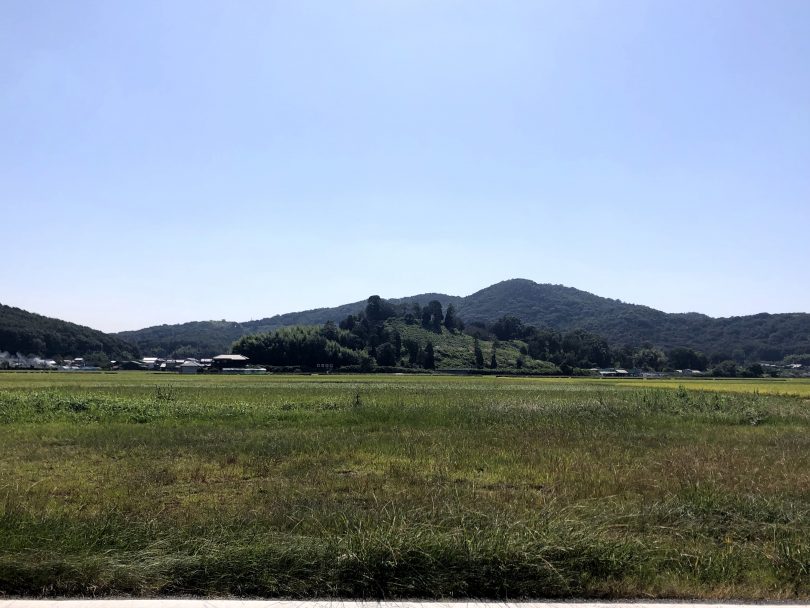

Kibitsu Shrine and Kibitsuhiko Shrine – Goal at JR Okayama Station
After leaving Takamatsu-joshi Park, I headed towards Okayama City via Okayama Junction again.
There are bike path signposts along the way, which can be used as actual landmarks in addition to your map or smartphone GPS, so it’s safe for first-time riders.

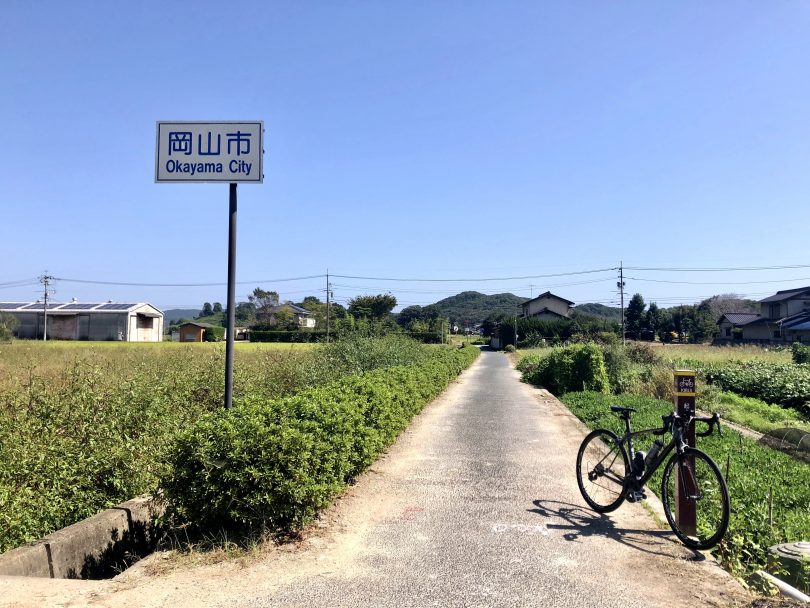
The last stop was Kibitsu Shrine and Kibitsuhiko Shrine.
The names are similar, but they are different shrines. Kibitsu Shrine, located on the west , is famous for its style of main shrine building, which is called “Hiyoku-Irimoya-zukuri”.
It is the only one of its kind in Japan and is also called “Kibitsu-zukuri” and is designated as a national treasure. The deity of the shrine is “Okibitsuhiko-no-mikoto,” who is said to be the model for the Japanese old tale “Momotaro” and who ruled the country of Kibi.
The long corridor leading to the main shrine is also beautiful, so please stop your bicycle and take your time to visit the shrine.
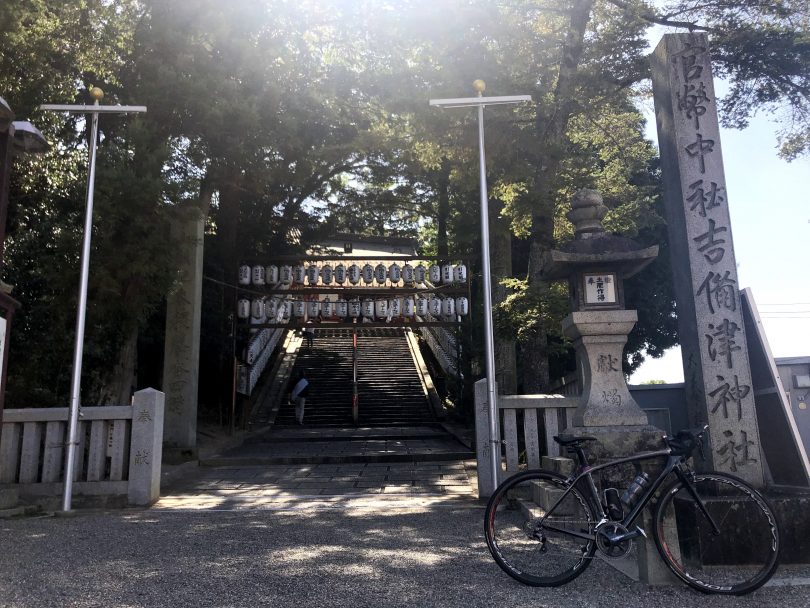
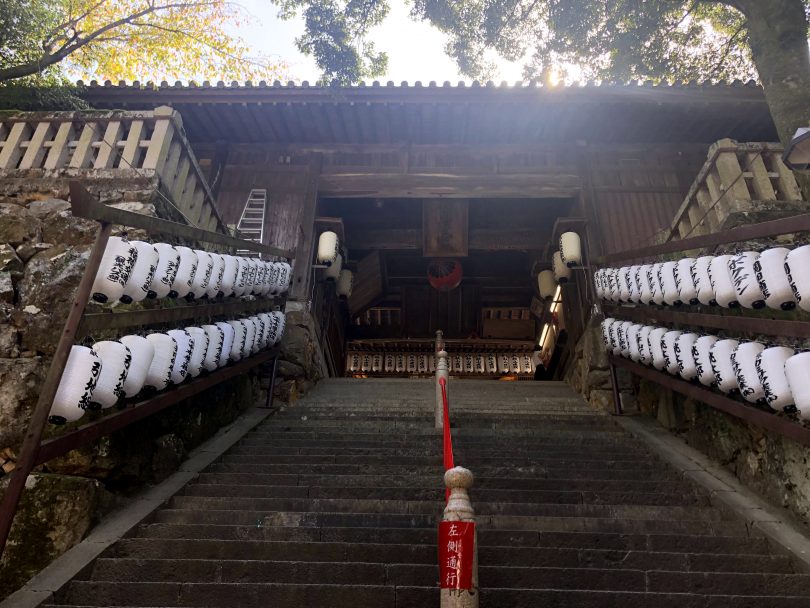
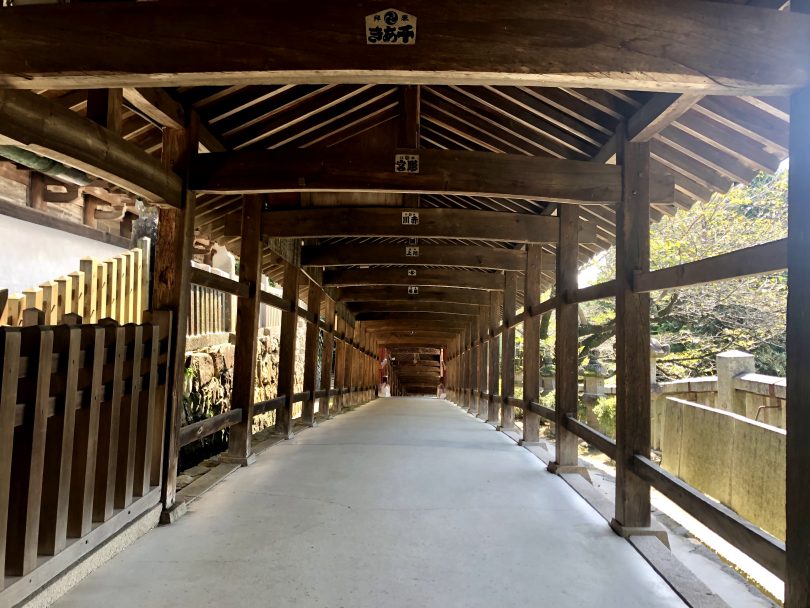
The distance from Kibitsu Shrine to Kibitsuhiko Shrine is about 2km via “Kibi no Nakayama-michi” lined with pine trees. Kibitsuhiko Shrine is said to have originated when the shrine building was built on the site of Okibitsuhiko-no-mikoto’s mansion. Although I didn’t stop by this time, you can feel that many rituals and spots related to the “Onra legend”, which is said to be the original form of “Momotaro”, still exist, such as the “Narukama shrine ritual” held in this area and “Kinojo Mountain” in Soja.
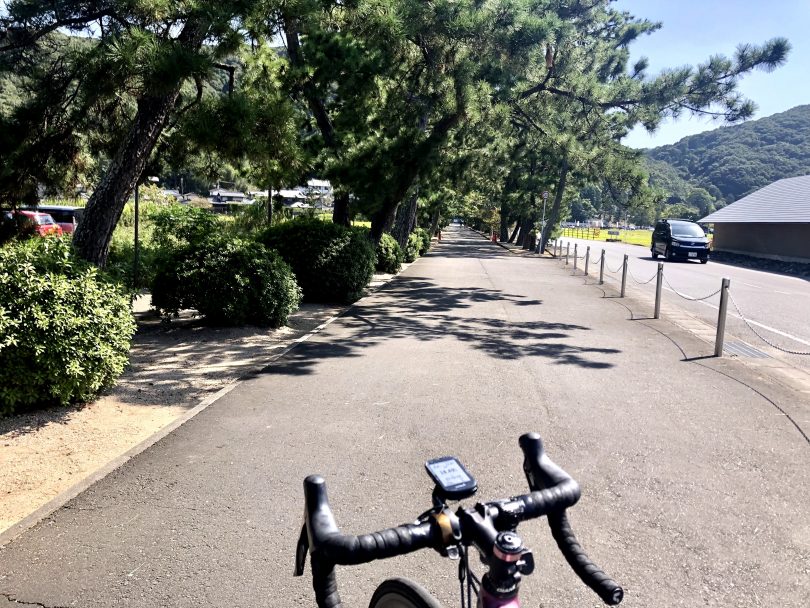
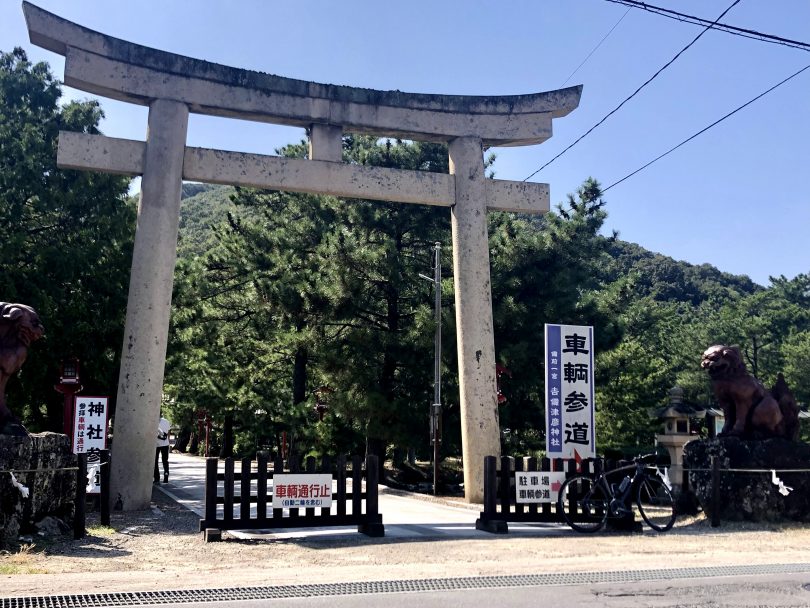
From Kibitsuhiko Shrine to the goal at JR Okayama Station is just about 6km.
You can buy Kibi-dango (Local rice dumplings in Okayama) at the station building “Sansute Okayama” as a memory of your trip, or you can take out the famous “Okayama Barazushi” or “Mamakari Sushi” (A variety of Okayama’s local suhsi)

Summary
From JR Higashi Soja Station to JR Okayama Station, I shared my ride of about 30km based on the Kibji cycling route.
Even if it’s your first time visiting a place, or even if you are a beginner, you can ride with confidence with a well-developed cycling route.
The Kibiji cycling route I rode this time is composed mainly of bicycle lanes separated from roadways and sidewalks, rice paddy roads, and narrow roads along rivers, so you can enjoy a relaxing ride without worrying about cars. Why don’t you consider your own original Okayama ride with the remaining seven main routes and sub-routes?
Related page:


